tunalegs
Pretended Artist
There is a concept in Japan of the beauty of impermanence, transition, simplicity - of objects, places, etc. which possess "character" that displays the action of such things. To those of us in the west this may best be likened to a combination of appreciation for patina and things rustic. This is known as wabi-sabi, and if ever I came a cross a camera which could fit into that concept of beauty, this K.W. Pilot 6 is it.
 Kamera-Werkstätten Pilot 6 by berangberang, on Flickr
Kamera-Werkstätten Pilot 6 by berangberang, on Flickr
I've always wanted a K.W. Pilot. It falls into that uncommon intersection of ingenious simplicity and precise quality that few cameras possess. K.W. tackled the idea of a cheap but functional SLR with brilliant ingenuity. First came the Reflex-Box, then came the Pilot 6 and Super Pilot, and finally came the Praktiflex from which all later Prakticas (and a good deal of other cameras) have descended.
 Kamera-Werkstätten Pilot 6 by berangberang, on Flickr
Kamera-Werkstätten Pilot 6 by berangberang, on Flickr
The Pilot 6 and the Reflex-Box both used an ingenious, though imperfect solution to the problem of creating a cheap single lens reflex. By combing the mirror and shutter into one mechanism, much of the complexity of the SLR was done away with. In basic concept the shutter of the Pilot 6 is like that of the postwar Ihagee Exa, only simpler even. When the shutter is tripped the mirror rises, and on its way up it uncovers the back of the lens. Built into the back of the mirror is a frame that extends well back into the "cone" of the camera, this frame moves with the mirror, and on it is a prong which engages a loop of metal on a metal plate that slides along the bottom of the "cone". As the mirror continues moving up, this plate is pulled up with it until it covers the back of the lens. This is the shutter of the Pilot 6. The Exa is a little bit more complex in that the "slit width" between the mirror and the following sector varies depending on which speed is selected. On the Pilot 6 the opening between the mirror and following sector is fixed, the speed is controlled by spring tension alone.
The drawback to this type of shutter is that it needs a very strong spring, and there is a lot of moving mass leading to a very strong mirror slap. The sound the Pilot 6 makes is similar to the sound of somebody slapping closed the cover of a hard-bound book. And the shake is tremendous. But the designers came up with a brilliant "half solution". The mirror does not reach the end of its travel, and consequently does not slap until after the shutter closes. One still has to hold the camera very tightly though simply to control the accelerating masses of brass and glass swinging wildly about during exposure - but mirror slap thankfully is a non-issue.
 Kamera-Werkstätten Pilot 6 by berangberang, on Flickr
Kamera-Werkstätten Pilot 6 by berangberang, on Flickr
An interesting design feature is the f/stop read out in front of the viewing hood. This allows one to select the f/stop without taking their eyes off the ground glass. Very useful in the days before pre-set lenses. The small knob is used for selecting, and a dial on top displays the selected aperture. If you think that viewing through an f/4.5 lens is dim - K.W. also made a version with an f/6.3 lens!
 Kamera-Werkstätten Pilot 6 by berangberang, on Flickr
Kamera-Werkstätten Pilot 6 by berangberang, on Flickr
So the Pilot had a lot of character even when new. Along the way this particular one picked up even more character, apparently having been taken apart and reassembled with all sorts of miss-matched screws. The outside of the camera including all of the leather has been coated over in glossy black enamel, and there is the cracked groundglass and plating loss on nickel parts as well. This is a camera which has been used and "mended" for decades and shows some interesting character because of it. It possesses a certain rustic charm and I'm enthusiastic about seeing what I can do with it once I pick up some new 120. I admit though, it could use a little moss growing on it for a better effect.
The outside of the camera including all of the leather has been coated over in glossy black enamel, and there is the cracked groundglass and plating loss on nickel parts as well. This is a camera which has been used and "mended" for decades and shows some interesting character because of it. It possesses a certain rustic charm and I'm enthusiastic about seeing what I can do with it once I pick up some new 120. I admit though, it could use a little moss growing on it for a better effect. 
 Kamera-Werkstätten Pilot 6 by berangberang, on Flickr
Kamera-Werkstätten Pilot 6 by berangberang, on FlickrI've always wanted a K.W. Pilot. It falls into that uncommon intersection of ingenious simplicity and precise quality that few cameras possess. K.W. tackled the idea of a cheap but functional SLR with brilliant ingenuity. First came the Reflex-Box, then came the Pilot 6 and Super Pilot, and finally came the Praktiflex from which all later Prakticas (and a good deal of other cameras) have descended.
 Kamera-Werkstätten Pilot 6 by berangberang, on Flickr
Kamera-Werkstätten Pilot 6 by berangberang, on FlickrThe Pilot 6 and the Reflex-Box both used an ingenious, though imperfect solution to the problem of creating a cheap single lens reflex. By combing the mirror and shutter into one mechanism, much of the complexity of the SLR was done away with. In basic concept the shutter of the Pilot 6 is like that of the postwar Ihagee Exa, only simpler even. When the shutter is tripped the mirror rises, and on its way up it uncovers the back of the lens. Built into the back of the mirror is a frame that extends well back into the "cone" of the camera, this frame moves with the mirror, and on it is a prong which engages a loop of metal on a metal plate that slides along the bottom of the "cone". As the mirror continues moving up, this plate is pulled up with it until it covers the back of the lens. This is the shutter of the Pilot 6. The Exa is a little bit more complex in that the "slit width" between the mirror and the following sector varies depending on which speed is selected. On the Pilot 6 the opening between the mirror and following sector is fixed, the speed is controlled by spring tension alone.
The drawback to this type of shutter is that it needs a very strong spring, and there is a lot of moving mass leading to a very strong mirror slap. The sound the Pilot 6 makes is similar to the sound of somebody slapping closed the cover of a hard-bound book. And the shake is tremendous. But the designers came up with a brilliant "half solution". The mirror does not reach the end of its travel, and consequently does not slap until after the shutter closes. One still has to hold the camera very tightly though simply to control the accelerating masses of brass and glass swinging wildly about during exposure - but mirror slap thankfully is a non-issue.
 Kamera-Werkstätten Pilot 6 by berangberang, on Flickr
Kamera-Werkstätten Pilot 6 by berangberang, on FlickrAn interesting design feature is the f/stop read out in front of the viewing hood. This allows one to select the f/stop without taking their eyes off the ground glass. Very useful in the days before pre-set lenses. The small knob is used for selecting, and a dial on top displays the selected aperture. If you think that viewing through an f/4.5 lens is dim - K.W. also made a version with an f/6.3 lens!
 Kamera-Werkstätten Pilot 6 by berangberang, on Flickr
Kamera-Werkstätten Pilot 6 by berangberang, on FlickrSo the Pilot had a lot of character even when new. Along the way this particular one picked up even more character, apparently having been taken apart and reassembled with all sorts of miss-matched screws.
hans voralberg
Veteran
Thanks for the write up, very interesting camera indeed, and yes beautiful!
tunalegs
Pretended Artist
And now for some photos from the first roll!
 cranes by berangberang, on Flickr
cranes by berangberang, on Flickr
 lake by berangberang, on Flickr
lake by berangberang, on Flickr
 wall by berangberang, on Flickr
wall by berangberang, on Flickr
 volkswagen by berangberang, on Flickr
volkswagen by berangberang, on Flickr
 Hero Alarm Clock by berangberang, on Flickr
Hero Alarm Clock by berangberang, on Flickr
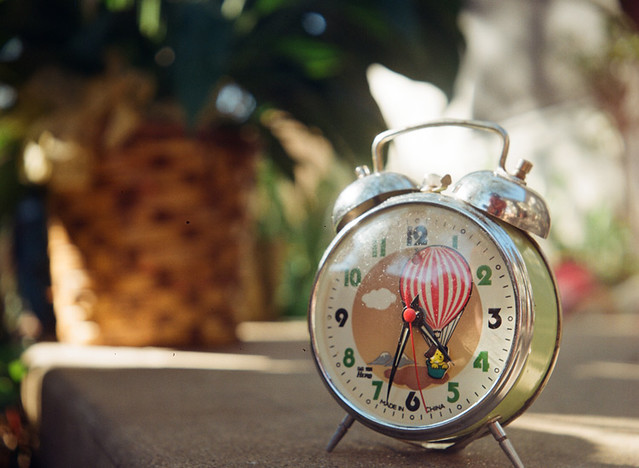 Hero Dog Clock by berangberang, on Flickr
Hero Dog Clock by berangberang, on Flickr
It is really interesting to see these images because the viewfinder is so hard to see, I had little idea what they would look like! The close ups were taken with a +3 diopter lens as the minimum focus on the Ennatar is just slight under 5'. The Pilot 6 makes very little use of the advantages of an SLR over a TLR, except for reducing costs by having one lens instead of two.
I do however really love the way the lens renders and will be using this camera frequently.
 cranes by berangberang, on Flickr
cranes by berangberang, on Flickr lake by berangberang, on Flickr
lake by berangberang, on Flickr wall by berangberang, on Flickr
wall by berangberang, on Flickr volkswagen by berangberang, on Flickr
volkswagen by berangberang, on Flickr Hero Alarm Clock by berangberang, on Flickr
Hero Alarm Clock by berangberang, on Flickr Hero Dog Clock by berangberang, on Flickr
Hero Dog Clock by berangberang, on FlickrIt is really interesting to see these images because the viewfinder is so hard to see, I had little idea what they would look like! The close ups were taken with a +3 diopter lens as the minimum focus on the Ennatar is just slight under 5'. The Pilot 6 makes very little use of the advantages of an SLR over a TLR, except for reducing costs by having one lens instead of two.
I do however really love the way the lens renders and will be using this camera frequently.
Coopersounds
Well-known
Thank you for a great little write up on an interesting little camera that I was unaware of.
Looks like it takes some great photos despite that mirror slap you describe.
Looks like it takes some great photos despite that mirror slap you describe.
tunalegs
Pretended Artist
Thank you for a great little write up on an interesting little camera that I was unaware of.
Looks like it takes some great photos despite that mirror slap you describe.
I found an easy to way to keep it still is to rest it on your knee when taking a picture!
gb hill
Veteran
I really like the color the film & lens of the camera produces. What film did you use?
farlymac
PF McFarland
There is one of these in a camera store I visit about once a month. I can't remember which lens it has, but it looks "rustic", which is probably why it's still there. Lovely results from yours, and what size +3 diopter did you use, in series or screw-mount?
PF
PF
tunalegs
Pretended Artist
I really like the color the film & lens of the camera produces. What film did you use?
Lomography 100 ASA C41. I think it is the same as Lucky's color film, but I don't remember Lucky ever offering it in 120 rolls, as well as I have heard Lucky have halted film production.
There is one of these in a camera store I visit about once a month. I can't remember which lens it has, but it looks "rustic", which is probably why it's still there. Lovely results from yours, and what size +3 diopter did you use, in series or screw-mount?
PF
I just held a 49mm one in front of the lens. But it should take a 30mm push on type.
If you're lucky the one in your local shop may have the "fast" f/3.5 lens which should make the screen as bright as any contemporary TLR. The later Pilot Super could be had with a f/2.9 lens.
Solinar
Analog Preferred
Rarely does someone bring something so uncommon to share with us to the forum. I wasn't aware of this relatively compact medium format reflex pioneer from the 1930'ies.
Looking at the photos, I must say it is definitely in capable hands.
That Beetle parked outside the fence of Kenny Hill VW brings back memories. When I moved here, the moon towers were taller than the buildings being erected by those cranes in the first photo.
Best Regards,
Looking at the photos, I must say it is definitely in capable hands.
That Beetle parked outside the fence of Kenny Hill VW brings back memories. When I moved here, the moon towers were taller than the buildings being erected by those cranes in the first photo.
Best Regards,
tunalegs
Pretended Artist
I moved to Austin in 2009 and it seems the cranes are never going away. The strangest thing about it though is that they only seem to be building apartments and condos and I cannot figure out who is supposed to live in them or where they work downtown. It's all very mysterious.
Anyway I'm already working my third roll through this camera.
Anyway I'm already working my third roll through this camera.
leicapixie
Well-known
A really exciting find and usage.
A friend of mine has a similar but way newer "Chinese" box.
Hand finished, one can see the unpolished file marks..
Strangely the slow dark lens, still managed great images.
Impressive results, even if camera lacks the fancy chrome.
A friend of mine has a similar but way newer "Chinese" box.
Hand finished, one can see the unpolished file marks..
Strangely the slow dark lens, still managed great images.
Impressive results, even if camera lacks the fancy chrome.
nongfuspring
Well-known
Tunalegs, I really enjoyed the write up. For all the this vs. that gear discussion that happens it is very nice to read something sensitive to the beauty and idiosyncracies of cameras.
Joe Vitessa
Well-known
I've got one of these in excellent shape, but it has a frozen shutter. I recall seeing some repair tips somewhere online...
Thanks for the write-up. Makes me want to fix mine up.
Thanks for the write-up. Makes me want to fix mine up.
tunalegs
Pretended Artist
I've got one of these in excellent shape, but it has a frozen shutter. I recall seeing some repair tips somewhere online...
Thanks for the write-up. Makes me want to fix mine up.
If you'd want to send it to me I could probably unlock the shutter. I've worked on many Exas and the Pilot is even simpler/larger inside.
tunalegs
Pretended Artist
Some shots from a community garden:
 Community Garden by berangberang, on Flickr
Community Garden by berangberang, on Flickr
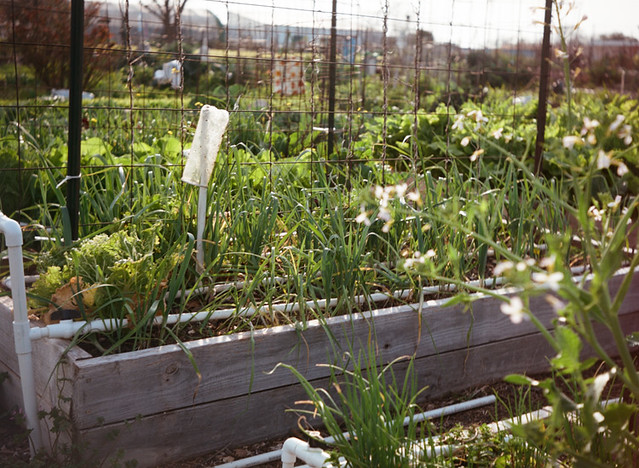 Community Garden by berangberang, on Flickr
Community Garden by berangberang, on Flickr
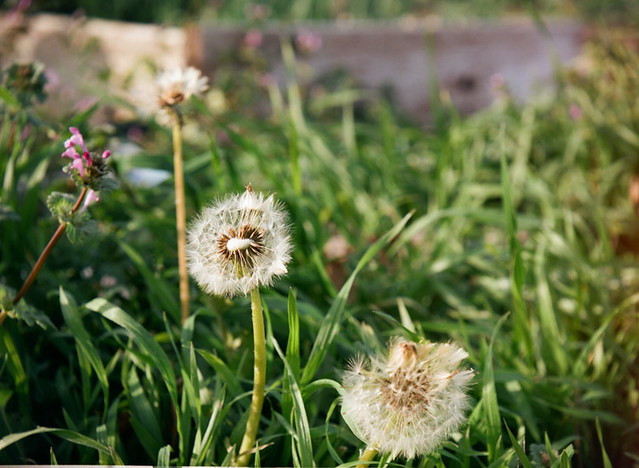 Dandelion by berangberang, on Flickr
Dandelion by berangberang, on Flickr
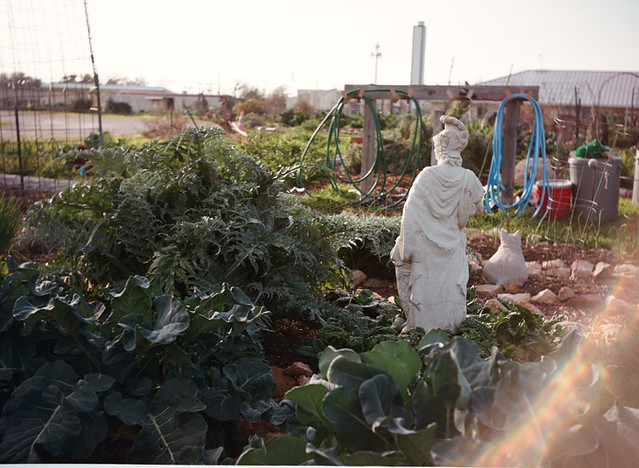 Statue by berangberang, on Flickr
Statue by berangberang, on Flickr
 Plant bulb by berangberang, on Flickr
Plant bulb by berangberang, on Flickr
All shot on Portra 160. I thought it'd be fun to take some photos at the garden but in reality it turned out really hard to make any interesting compositions. A big problem with doing anything that wasn't close ups was really ugly buildings in the background.
 Community Garden by berangberang, on Flickr
Community Garden by berangberang, on Flickr Community Garden by berangberang, on Flickr
Community Garden by berangberang, on Flickr Dandelion by berangberang, on Flickr
Dandelion by berangberang, on Flickr Statue by berangberang, on Flickr
Statue by berangberang, on Flickr Plant bulb by berangberang, on Flickr
Plant bulb by berangberang, on FlickrAll shot on Portra 160. I thought it'd be fun to take some photos at the garden but in reality it turned out really hard to make any interesting compositions. A big problem with doing anything that wasn't close ups was really ugly buildings in the background.
Mr_Flibble
In Tabulas Argenteas Refero
I found an easy to way to keep it still is to rest it on your knee when taking a picture!
Yeah, mirror-slap on the Pilot-6, the Pilot-Super and the 6x9 format KW Reflex box can be pretty vicious.
I have a number of photos from the Pilot-6 where the bottom half is sharp but the top half is slightly fuzzy because of it.
I believe the shutter design is called a "Guillotine shutter"
Some of my Pilot-6 photos
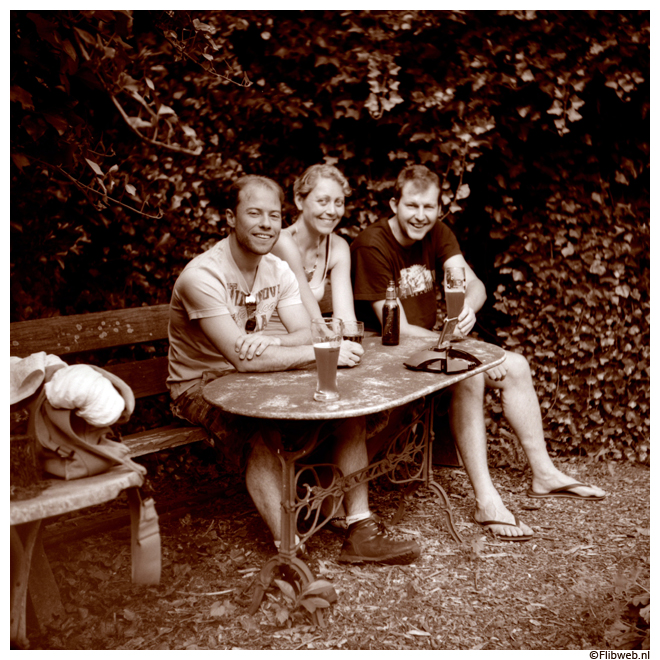
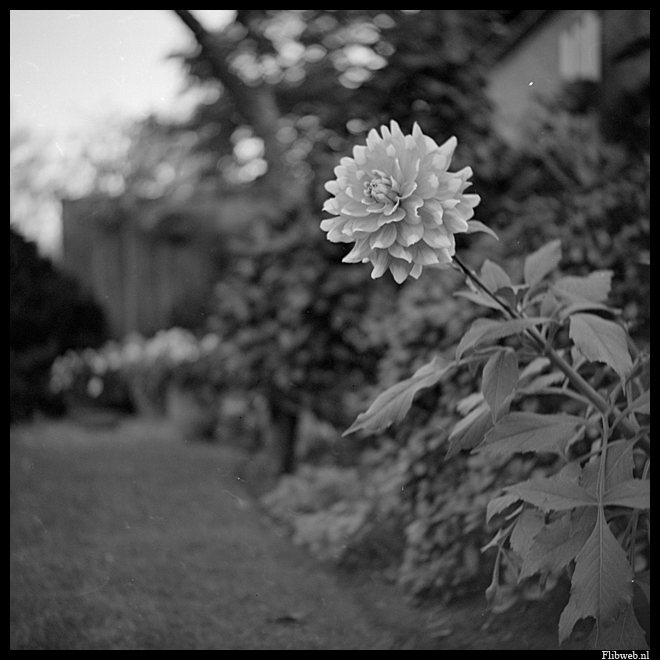
tunalegs
Pretended Artist
I had seen those photos before when looking for info on this camera and I wondered if perhaps there wasn't a different reason for the blur in them. I'm thinking the issue may be film flatness rather than camera movement. I've noticed in my example that the pressure plate actually covers the lower film roller - effectively riding on top of it. In my photos one top corner of the negatives is always out of focus, and when I looked into it I found that the film roller rides a little high on that side - meaning the pressure plate cannot press the film against the film gate on that corner.
If in your camera the entire roller is sitting a bit high it would explain the lack of focus across the whole upper edge of the photo.
If in your camera the entire roller is sitting a bit high it would explain the lack of focus across the whole upper edge of the photo.
Mr_Flibble
In Tabulas Argenteas Refero
Thanks for the tip, I'll look into it when I get home 
tunalegs
Pretended Artist
 Pilot 6 by berangberang, on Flickr
Pilot 6 by berangberang, on FlickrI went out to test my 1938 Pilot 6. This iteration features a completely revised shutter and a full 6x6 frame. The shutter is cocked with a knob that also sets the speed - and like in cameras with a focal plane shutter if you touch the knob while it's moving you'll ruin the exposure. Which is something I did. My 1938 Pilot 6 has the 3.5/80 Laack Pololyt lens which gives much brighter viewing than the 4.5/75 on my early 6.
 Sporophytes by berangberang, on Flickr
Sporophytes by berangberang, on Flickr Moss On Rocks by berangberang, on Flickr
Moss On Rocks by berangberang, on FlickrThe scans did not turn out as sharp as I would have liked, the negs look great through a loupe though. It was also a dark, rainy day so I did not get to stop the lens down for a good depth of field for close ups. I noticed this camera randomly produces the same effect as Mr. Flibbles - bluring part of the frame. I think it may only happen with certain shutter speeds since it only occurred on a couple of photos on the roll, but the effect looked identical.
Mr_Flibble
In Tabulas Argenteas Refero
Is that specifically changed on your camera? Because normally you cock the shutter with the little lever behind the shutter speed dial.The shutter is cocked with a knob that also sets the speed - and like in cameras with a focal plane shutter if you touch the knob while it's moving you'll ruin the exposure.
Are the aperture numbers on your Pilot-6 changed to match the Laack lens?
I agree that the mirror slap probably only effects some of the slower speeds where the distances between the opening and closing edges are larger
example of blurred top half. Don't recall the settings though.
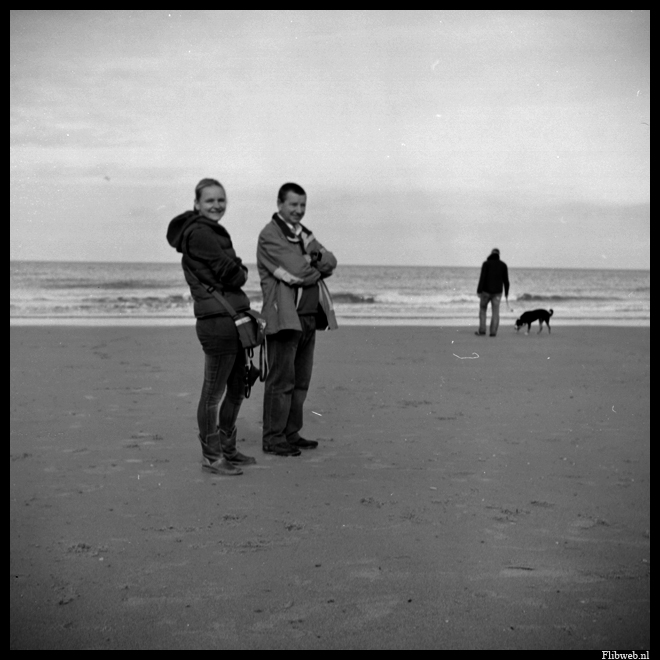
I need to run some film through my KW Reflexbox or Pilot-6 again.
Share:
-
This site uses cookies to help personalise content, tailor your experience and to keep you logged in if you register.
By continuing to use this site, you are consenting to our use of cookies.
